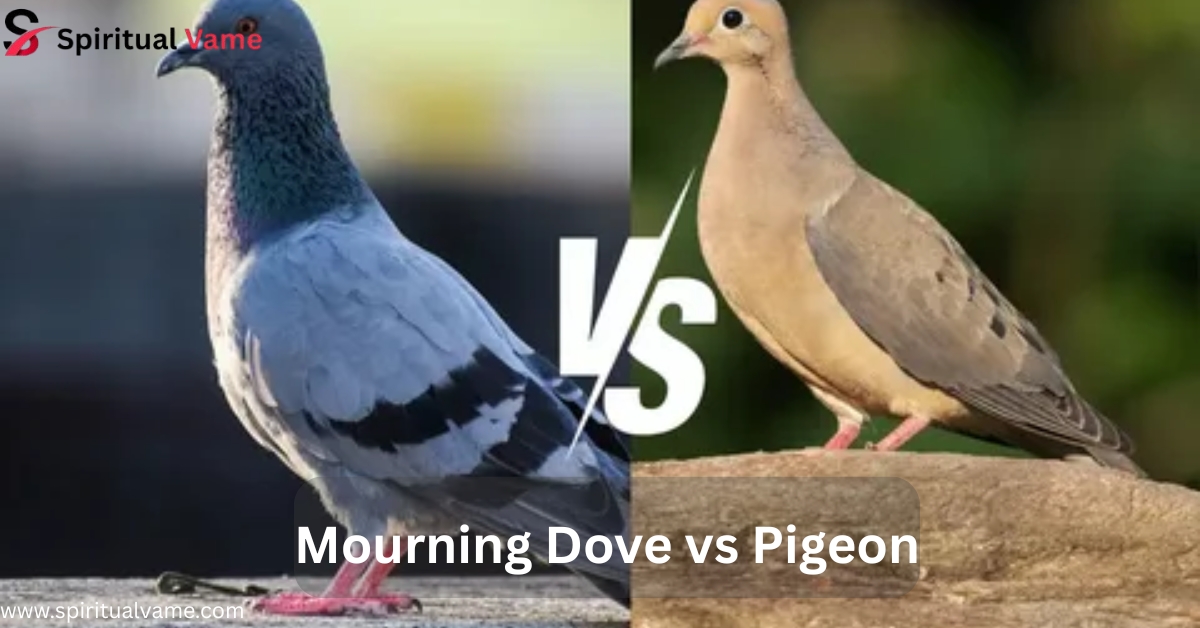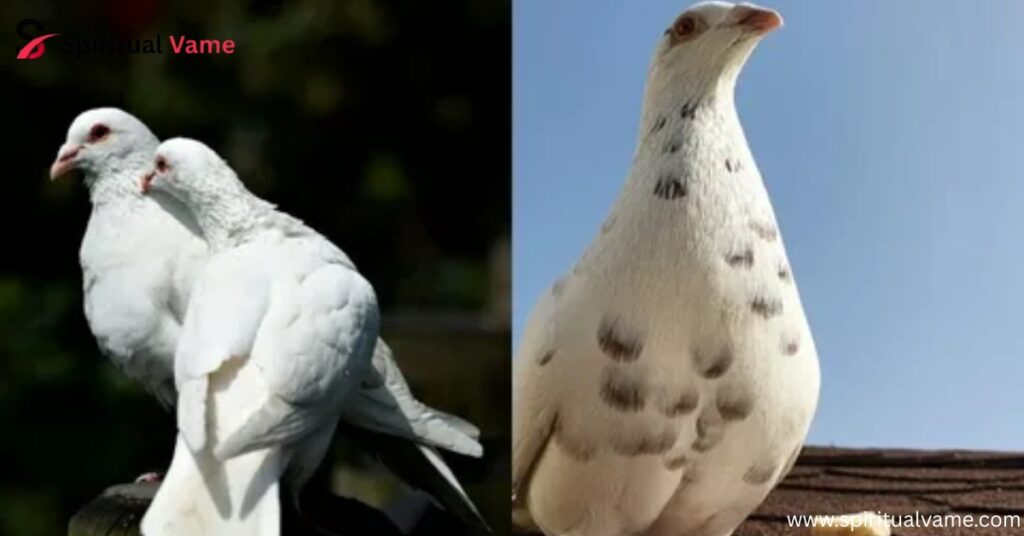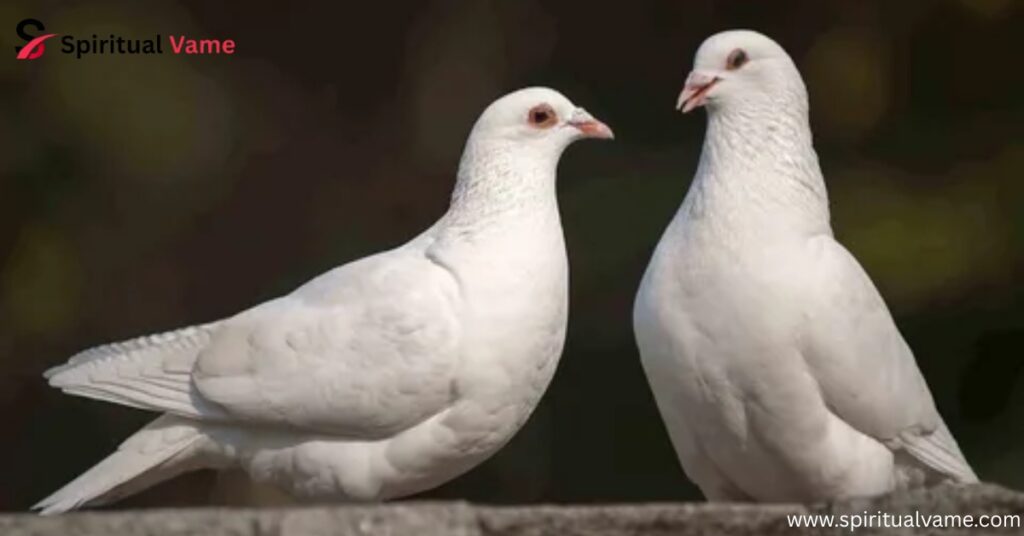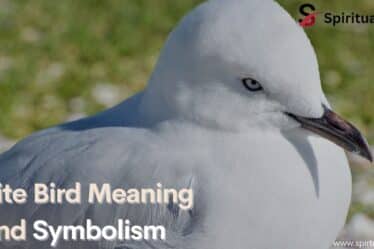
When birdwatching in your backyard or local park, you might notice two common birds: pigeons and mourning doves. They can look similar at first, but they are very different. This guide on pigeon vs mourning dove will help you spot those differences easily. We’ll talk about their looks, sounds, habits, and more. Both birds are part of the Columbidae family, yet they each have unique traits.
In this blog, we’ll explore the key features of pigeon vs mourning dove so you can tell them apart. Whether you’re a beginner or bird lover, learning about these birds is fun and useful. Let’s dive into the world of pigeon vs mourning dove identification.
Mourning Dove vs Pigeon-Consider Habitat
When it comes to where they live, Mourning Doves and Pigeons prefer very different spaces. The Mourning Dove is often found in open fields, woodlands, farmland, grasslands, and suburban backyards. These birds like quiet places where they can forage on the ground and build their nests in trees or shrubs. According to experts at BirdsZone and All About Birds, Mourning Doves are common in every state from Alaska to Florida, and even into Canada, Mexico, and Panama.
Pigeons, especially the Rock Pigeon, thrive in urban areas. Cities like New York, Chicago, and Los Angeles are full of these birds. They build nests on building ledges, bridges, and rooftops. You’ll often see flocks in parks, bus stops, and even on sidewalks. Their ability to live alongside humans and find food in public places shows their adaptation and resilience. These birds are often studied by organizations like the USGS, Birdepedia, and Aviculture Blog because of their success in human environments.
Differences in Color and Tail Length
The coloration and tail shape of these two birds are among the easiest ways to tell them apart. The Mourning Dove has soft, earth-toned plumage—a mix of light browns, tans, and gentle grays. Its tail is long and tapered with white edges, giving it a pointed look. The feathers may appear slightly spotted or have small black bars on the wings. The dove’s appearance is slender, graceful, and elegant.
In contrast, the Pigeon has a stockier build and shorter, fan-shaped tail. The bird’s neck often shines with iridescent green and purple feathers that glimmer in the sunlight. Pigeons can be gray, white, black, or even speckled. Their plumage is more varied than that of Mourning Doves, especially in city environments where multiple morphs and mutations have emerged through domestication and selective breeding. This difference in feather and tail shape is often highlighted by bird ID resources like Birds of the World, Wikipedia, and Macaulay Library.
Differences in Diet
Food is another area where these birds differ. Mourning Doves primarily eat seeds, especially sunflower seeds, millet, and grains. They forage on the ground and prefer clean, open spaces for feeding. Their diet is natural and healthy, and they often visit backyard feeders designed with native species in mind.
Pigeons, on the other hand, are known for eating almost anything. In cities, they can be seen pecking at bread crumbs, junk food, and even leftovers from garbage. This has earned them nicknames like “urban scavengers” or “garbage disposals” among urban birdwatchers. While their diet makes them adaptable, it can also harm their health and lead to population problems.
Meet the Birds- Mourning Dove vs. Pigeon
Getting to know these birds helps us appreciate their roles in ecosystems and urban life. The Mourning Dove is admired for its peaceful presence and is even a gamebird in some states, regulated by the U.S. Fish and Wildlife Service. The Pigeon, once used in wars as a messenger, is a symbol of adaptability and urban life.
Both species play roles in seed dispersal and environmental balance, making them important in their own ways. Whether spotted in a quiet garden or a bustling street, these birds have adapted in different ways to live alongside humans.

Mourning Dove (Zenaida macroura)
The Mourning Dove is a monogamous species that raises multiple broods of squabs each year. It nests in shrubs, trees, or even on artificial shelves, with the breeding season stretching from March to September. Mourning Doves are known for their mournful coo, a sound often mistaken for a lament or sad song.
According to the Cornell NestWatch, a pair of Mourning Doves will share duties of incubation, feeding, and protecting their young. They produce crop milk, a nutrient-rich fluid, to feed chicks during the early days. Their presence in gardens and backyards adds tranquility and beauty to our surroundings.
Pigeon (Rock Pigeon, Columba livia)
The Rock Pigeon, introduced to North America centuries ago, is now one of the most widespread and abundant birds on the continent. Found in nearly every urban center, it breeds year-round and raises multiple broods. These birds build nests in high, protected spaces and are extremely communal.
1. Looks- Slim & Elegant vs. Round & Relatable
When comparing the Mourning Dove and the Pigeon, one of the first things you’ll notice is their overall build and shape. The Mourning Dove is slender and graceful. Its body is long, with a tapered tail, and its feathers lie flat and smooth. Its delicate look gives it an elegant, almost fragile appearance. On average, Mourning Doves measure about 9 to 13 inches in length and weigh between 4 to 6 ounces.
Pigeons, especially the Rock Pigeon, look completely different. They have a stocky, robust body with a short neck and rounded tail. Their head and chest are more prominent, and their stance appears sturdier. Rock Pigeons can range from 12 to 15 inches long and weigh up to 13 ounces. The feathers around their neck are often iridescent, shining with green or purple when caught in the sunlight. This physical morphology makes them appear more relatable or common in cities, but no less interesting.
2. The Sounds- Who’s the Better Crooner?
One of the most beautiful parts of any bird is its vocalization, and this is another key area where the Mourning Dove and the Pigeon differ. The Mourning Dove’s cooing is soft, long, and melancholic, almost like a whistling lament. Many people describe it as soothing and peaceful. This unique vocal trait is what gives the Mourning Dove its name—it sounds like it’s mourning.
Pigeons, on the other hand, produce a deeper and more guttural coo. It’s often louder, repetitive, and can echo in urban settings. While not unpleasant, it’s more forceful and less musical than the Mourning Dove’s song. Recordings of both species’ vocalizations can be found on platforms like Xeno-canto, Macaulay Library, and All About Birds, where listeners can learn to distinguish between their calls.
3. Lifestyle- City Slicker vs. Suburban Chill
The lifestyle and behavior of these birds are shaped by their surroundings. Pigeons are the ultimate urban birds. You’ll find them gathering in flocks on rooftops, public squares, and sidewalks. They are highly social and communal, often feeding and roosting in large groups. Their behavioral traits show how well they’ve adapted to life with humans.
In contrast, Mourning Doves prefer a more suburban or rural lifestyle. They are usually seen in pairs or small groups, and their behavior is more reserved. They like quiet spaces, often nesting in shrubs, gutters, or low-hanging trees.
4. Eating Habits- Gourmet vs. Garbage Disposal
The diet of these birds says a lot about their roles in the environment. Mourning Doves eat a wide variety of native seeds, such as sunflower seeds, millet, and sorghum. They mostly feed on the ground, picking at scattered seeds. Their gentle foraging habits are quiet and neat, and they usually don’t disturb other birds at feeders.
Pigeons, however, have a more flexible and sometimes unhealthy diet. They are known to eat almost anything—bread, popcorn, chips, and even discarded food scraps. This has earned them the nickname “garbage disposals of the sky.” This adaptability has helped them thrive in cities but can also cause issues like obesity, disease, and dependency on humans.

5. Flight- Speed vs. Style
Though both birds can fly well, they do so in very different ways. The Mourning Dove is built for speed and agility. When it takes off, you may hear a sharp whistling sound from its wings. Its flight pattern is fast and bullet-straight, and it can reach speeds up to 55 miles per hour. This makes them one of the fastest flying birds in North America.
Pigeons, on the other hand, focus more on control and maneuverability. Their flight is steady and powerful, and they can navigate through tight city spaces with ease. Their wings beat strongly, and they can glide or hover briefly. This difference in flight is another way to tell the birds apart, especially in the wild or during birdwatching outings.
6. Personality- Introvert vs. Extrovert
The Mourning Dove is a classic introvert. It prefers to stay quiet, out of sight, and avoids confrontation. It will often perch quietly, observe from a distance, and only call softly. These behavioral traits make it a symbol of peace, gentleness, and solitude in many cultures and among birdwatchers.
Pigeons, by contrast, are extroverted. They are not shy and will boldly walk among people, fly up to you for food, or roost in busy public places. Their social nature makes them more visible and active. You’re more likely to have direct interactions with pigeons, especially in cities. This contrast in personality reflects how both birds have uniquely adapted to living near humans.
Final Thoughts-Which Bird is Your Vibe?
Both the Mourning Dove and the Pigeon are wonderful and fascinating birds. Whether you’re drawn to the peaceful elegance of the Zenaida macroura or the social confidence of the Columba livia, each bird brings its own charm and role in our shared environment. Your preference might depend on your surroundings—if you live in a quiet neighborhood, you might spot Mourning Doves. If you’re in the city, Pigeons are sure to be around.
These birds remind us of the beauty and diversity of urban and suburban wildlife. They also highlight the importance of coexistence, biodiversity, and conservation. Supporting organizations like the Audubon Society, BirdLife International, and U.S. Fish and Wildlife Service helps ensure that both of these birds continue to thrive for future generations.
People often ask whether there’s a real difference between pigeons and doves. Technically, all pigeons are doves, and all doves are pigeons, since both belong to the Columbidae family. The words “dove” and “pigeon” are more about tradition and regional naming than strict scientific classification. Usually, smaller, graceful species are called doves, while larger, stockier species are called pigeons.
The Rock Pigeon and the Mourning Dove are perfect examples of this difference in naming. They show us how morphological features, behavior, and habitat preferences help us identify and distinguish species, even within the same family.
Taxonomy And Origins
The taxonomy of pigeons and doves has roots in ancient classification. The Mourning Dove (Zenaida macroura) was described by Linnaeus, and the Rock Pigeon (Columba livia) has been known for thousands of years, even used as messenger birds in ancient civilizations. Both species are native to the Old World, but the Mourning Dove is now widely spread across North America, while the Rock Pigeon has been introduced to urban areas globally.
Family And Classification
Both birds belong to the Columbidae family. This group includes more than 300 species worldwide. The family is known for birds that produce crop milk, feed their young for extended periods, and show strong parental care. According to sources like BirdLife International and Birdserenity, classification within this family helps scientists understand evolution, migration, and adaptation across regions and habitats.

Nomenclature
The names we give these birds vary depending on location and tradition. The Mourning Dove has several names, including Rain Dove, Carolina Turtledove, and American Mourning Dove. The Rock Pigeon is also called a City Pigeon, and its close relatives include domestic breeds and even racing pigeons.
Shared Characteristics
Despite their differences, both birds share common traits. They are monogamous, raise multiple broods per year, and build simple nests. They both produce crop milk, and both are strong, capable flyers. Their feet, beak, and eye placement are also similar, which reflects their shared evolutionary history.
Physical Features
Physically, Mourning Doves are more slender with long, pointed tails. Pigeons are thicker, with shorter tails and larger wingspans. Their plumage, head shape, and neck size are also good indicators of their species. Guides on Birds of the World, BWD Magazine, and Birds and You help identify these differences clearly.
Behavioral Traits
Mourning Doves are more solitary and quiet, while Pigeons are more social, active, and urbanized. Doves are often seen in pairs, while Pigeons gather in large groups. This behavior helps birdwatchers and enthusiasts know what to expect based on location and habitat type.
Conclusion
Understanding the differences between the Mourning Dove and the Pigeon helps us appreciate their beauty, diversity, and importance. Whether you’re a backyard birdwatcher or a city dweller spotting birds from your window, recognizing these differences enriches our connection with nature. The comparison of pigeon vs mourning dove highlights their unique traits and behaviors. By learning about their distinct calls, habits, and habitats, we deepen our appreciation for both birds. Pigeon vs mourning dove discussions often reveal surprising facts about their lifestyles and adaptations. This knowledge allows us to better understand the roles these birds play in different environments. Noticing and valuing these differences fosters a stronger bond with the natural world around us.



